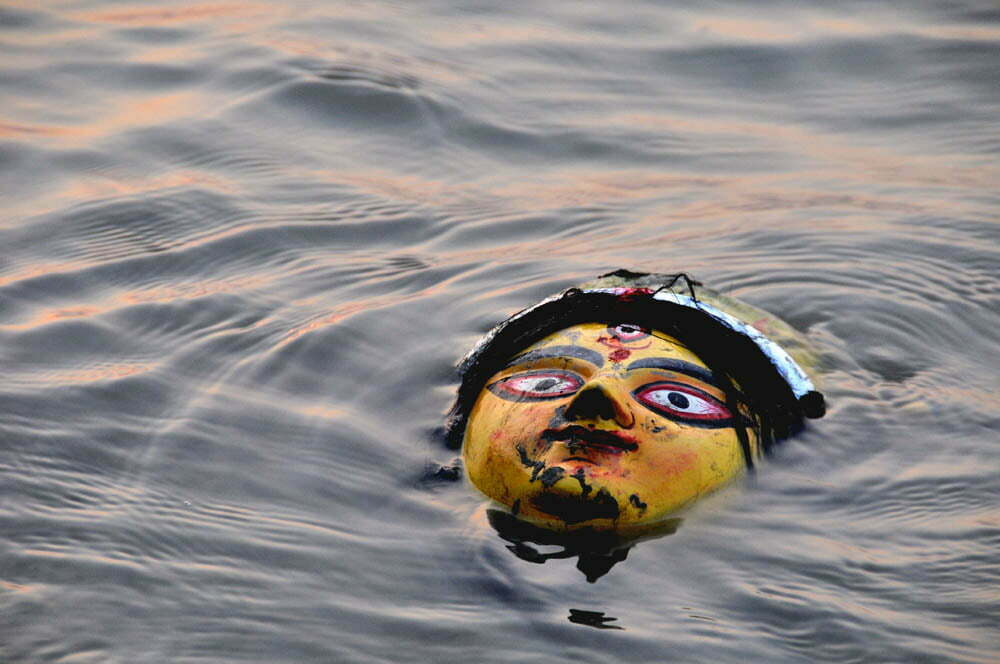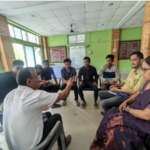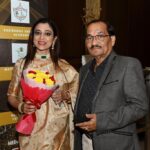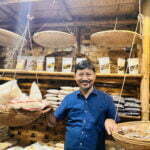Puja festival, Durga Maa, Mother Durga
Deepa K. Basfore
Poulami Chakraborty
Yaa Devii Sarva-Bhutessu Shakti-Ruupenna Samsthitaa |
Namas-Tasyai Namas-Tasyai Namas-Tasyai Namo Namah ||
Salutations to that Devi, who in all beings is abiding in the form of power. Salutations to her, again and again.
The moment someone utters Maa Durga, it’s obvious that an image of a powerful deity appears before us who shines bright, rides a lion and has eight arms and also has the most celebrated festival in her honor. The victory of Maa Durga over the demon is celebrated every year in the eastern region of India, however the nine forms of Maa Durga is worshipped in the entire nation specially in central India.
From Day-1 of the festival to Day-9, various forms of Maa are worshipped and each form has a different perspective and different meaning. Maa has been a source of empowerment not just for women but even men bow down their heads before this powerful deity. The feminine power had not only ruled the ordinary men living on this earth but also has influenced the God who resides in the heaven.
According to Indian mythology, Maa Durga came to earth just once but she has inspired and empowered many souls to be pure, kind, courageous etc. The depiction of Maa’s courage and her features are seen in many ladies of India and their deeds on the earth partially represents one or the other forms of Maa, if not Maa Durga completely.
Shailputri, the first Avatara of Durga
Manikarnika Tambe or popularly called as Rani Lakshmibai resembles Shailputri, the first Avatara of Durga and wife of Shiv and the daughter of the mountain king-Himalaya. All the Devtas -Brahma, Vishnu and Shiv accepted that Maa Shailputri is the supreme power and they became capable by getting power from her. Rani Lakshmibai also showed courage to fight with the British army and is still consider as one of the leading figures of Indian Rebellion of 1857. She is still referred as the Jezebel of India as the huge British army had to surrender before her and she would always be remembered as she lived and died for her country.
Mata Brahmacharini
Mata Brahmacharini or Tapacharini is the second form of Maa Durga. Her urge to be the wife of lord Shiva made her observe penance and she also declared that she would not marry anyone except Shiva. Observing penance is nearly impossible today; but like Maa Brahmacharini Irom Chanu Sharmila who is also called the Iron Lady of Manipur has proved it right with her 14th successive years of fasting, demanding Indian government to revoke AFSPA (Armed Forces [Special Powers] Act). Irom is continuing her fast from November 2, 2000 and would continue till the government agrees to her demand. Irom has been offered seats from many political parties; however she has denied all the luxury and continues fighting.
Mata Chandraghanta
Sarojini Naidu is a popular name in the Indian national movement. She joined Salt Satyagraha in 1930 with Mahatma Gandhi. During 1915–1918, she travelled to different regions in India delivering lectures on social welfare, women’s empowerment and nationalism. She was ready to fight all the difficulties and opponents and hence she is analogous to Mata Chandraghanta who is worshipped for peace, tranquility and prosperity in life. Mata Chandraghanta is an unprecedented image of bravery and her readiness to fight every difficulty is also seen in Sarojini Naidu.
Mata Kushmanda
Being considered as the creator of the Universe, Mata Kushmanda is worshipped on the fourth day of Navratri. She shines brightly with a laughing face in all ten directions as the Sun in the solar system. Unlike Mata Kushmanda, Kalpana Chawla is just a part of the universe instead of the creator of the universe, but Kalpana Chawla also loved staying near the sun and the planets rather than the earth. She was the first Indian-American astronaut and first Indian woman in space. She had traveled 10.67 million km, as many as 252 times around the Earth.
Maa Katyayani
Worshipped on the sixth day of Navaratri; Maa Katyayani signifies the most violent form to destroy Mahishasur. She rides on the lion and is depicted with four hands of which the two right hands carry lotus, sword and both the left hands are in abhaya and varada mudras. UshaVishwakarma, who had been a rape victim at the age of 18, is the initiator of the Red Brigade in Lucknow, UttarPradesh. It is a self-defense academy that teaches the girls to defend or attack the ones who have mal-intention towards them. Usha remained mentally turmoiled for a year after she went through the brutal incident and then decided to take up violence to eradicate the violence itself and thus she aptly represents Maa Katyayani.
Skanda Mata
The portrayal of Skanda Mata is defending and granting. She holds her son Skanda Lord Kartikeya on her lap and is worshipped on the fifth Day of Navratri. She has a bright complexion and often depicted as seated on a lotus. The founder of Missionaries of Charity in Kolkata (in 1950) Mother Teresa, reminds you of Skanda Mata. Mother Terasa advocated the cause of the helpless and was the embodiment of peace and tranquility. She won the Nobel Peace Prize in 1979 and India’s highest civilian honor, the Bharat Ratna, in 1980 for her humanitarian work. Mother Teresa’s Missionaries of Charity is operating 610 missions in 123 countries, including hospitals and homes for people with HIV/AIDS, leprosy and tuberculosis, children and family counseling programs, orphanages, and schools.
Mata Kalaratri
She is dark like night and rides on shava (dead body); Mata Kalaratri is worshipped on the Seventh Day of Navratri. Her raised right hand always seems to grant boons to all worshippers and all her right lower hand is in the pose of allaying fears. Like Ma Kalaratri, Phoolan Devi also holds weapons in her hand and used to roam fearlessly in nights and was the leader of her dacoit gang. She was leveled with 42 crime charges out of which 22 were murder cases, and is popularly known as the “Bandit Queen”. Phoolan was raped from the age of 11 which occurred to her many times and this made her to take revenge and become a dacoit. Her fight against the evil made her popular not just in India but worldwide. Even dolls of Phoolan Devi dressed as Goddess Durga were sold in market towns in Uttar Pradesh during those days.
Mata Maha Gauri
Mata Maha Gauri is worshipped on the eighth day of Navratri and her power is unfailing and instantly fruitful. Probably, the fearlessness and unfailing power of Maha Gauri has been blessed to MC Mary Kom, an Indian boxer, who has won the World Amateur Boxing champion for the fifth time and the only woman boxer to have won a medal in each one of the six world championships. Apart from being a fearless powerful lady, Kom also has started a female-only fight club at Imphal to teach girls to defend themselves against sexual violence.
Mata Siddhiratri
The last but powerful form of Durga is Siddhiratri,worshipped on the last night of Navaratri. She sits on lotus and rides the lion. Also known as Adi-Parashakti and is resembled in today’s time by Jahnvi Goswami. She was the first lady from the North-East to accept the fact that she was HIV positive. She had the courage to accept her illness, which is considered as a taboo in the society. Siddhiratri is the giver of siddhi to Lord Shiva and likewise Jahnvi is the torch bearer of courage and knowledge about life and the challenging attitude to face any tough times.
The different forms of Goddess Durga have time and again indicated that woman is the source of power and is manifested in myriad ways at different times. Different real life women and their stories cited above speak volumes about the enormous power that the women possess.







